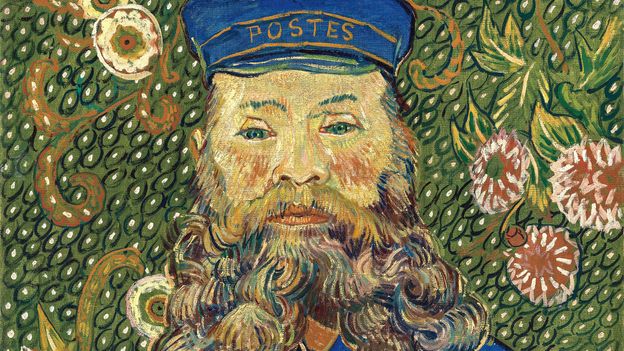- Arvind's Newsletter
- Posts
- Arvind's Newsletter
Arvind's Newsletter
Issue No. #1183
1.India and US to hold trade talks, raising hopes for reset: Reuters
India and the United States will hold trade talks on Tuesday, New Delhi said, raising hopes for a breakthrough weeks after President Donald Trump imposed punitive tariffs on the South Asian nation for buying Russian oil.
The move comes after Trump struck a more conciliatory tone in statements last week and expressed optimism that they could finalise a trade deal. The U.S. trade representative for South Asia, Brendan Lynch, will be in New Delhi for one day of talks, Indian chief negotiator Rajesh Agarwal said
Meanwhile, India and the European Union will hold the 14th round of negotiations for a proposed free trade agreement in Brussels from October 6 to 10 reported the Economic Times.
However, according to the Financial Times a dispute over the protected status of basmati rice is adding to tensions between India and Pakistan, threatening to complicate New Delhi’s push for a trade deal with the EU.
EU negotiators who are in New Delhi to seal a trade agreement are being pressured to accept India’s right to use the designation basmati, according to officials. But that would cause a diplomatic rift with Islamabad, so Brussels is playing for time, one official said.
2.Fujifilm plans to start semiconductor materials production in India by 2028: Business Standard
Japanese chemicals-to-camera equipment maker Fujifilm's arm, Fujifilm Electronic Materials, plans to begin India production of raw materials — used in semiconductor chip fabrication and packaging — by late 2027 or early 2028. This was revealed by Tetsuya Iwasaki, corporate senior vice-president and general manager of its electronics business division.
“We have many products, and we are studying which ones are better suited for Indian companies. We would like to begin production before 2028, if possible. Ideally, we would also like to export such products from India to other regions,” Iwasaki said.
The company is considering a three-pronged approach, wherein it will either initiate production independently or collaborate with an Indian partner on a licensing basis, Iwasaki said. A third approach would be to consider setting up joint ventures with Indian companies. Also, it would initiate the manufacturing of raw materials, such as chemicals, in the country.
3.Pine Labs gets Sebi nod for likely $1 billion IPO: Reuters
India's market regulator has given the green light to fintech firm Pine Labs for its initial public offering. The IPO, potentially valued at $1 billion, aims for a valuation of up to $6 billion. Pine Labs intends to utilize the IPO proceeds for overseas investments, technology development and debt reduction, as it competes with major players like Paytm and PhonePe.
4.India's overall unemployment rate declines to 5.1% in August: Economic Times
India's overall unemployment rate (persons of 15 years and above) declined to 5.1% in August 2025, showing signs of recovery, government data showed on Monday.
According to the latest Periodic Labour Force Survey (PLFS) released by the Ministry of Statistics and Programme Implementation (MoSPI), this marks the second consecutive month of decline from 5.6% in June and 5.2% in July.
The monthly bulletin noted that unemployment Rate (UR) among male declined to 5-month low level of 5.0% in August 2025. The drop was driven by easing urban male unemployment, which fell from 6.6% in July to 5.9% in August. Rural male unemployment also declined to 4.5%, the lowest in five months.
5,Why are global funds hungry for India’s snack makers? Mint
Singapore-based sovereign wealth fund Temasek will invest in Gujarat-based chips maker Balaji Wafers, Mint reported Wednesday. This is the latest in a series of moves by large foreign funds and strategic investors into Indian packaged food companies. What’s the draw? Mint explains.
Balaji Wafers, a major competitor to Pepsico’s Frito-Lay, is attracting Temasek’s attention for its strong market presence. This March, Temasek bought a 10% stake in iconic namkeens and snacks brand Haldiram’s alongside global investment firm Alpha Wave Global, which also took a small stake.
The fund had earlier invested $180 million in cloud-kitchens and quick-service restaurant operator Rebel Foods.
Investor interest is rising across the board, from venture capital (VC)-backed startups to regional legacy brands.
This week, Mint reported that bakery brand The Baker’s Dozen has appointed advisers to explore a sale; the company is backed by Fireside Ventures and Wipro Consumer Care’s venture arm. Coffee and baked goods chain Blue Tokai also raised $25 million from existing investors including Belgian family office Verlinvest.
Last month, private equity (PE) firm ChrysCapital acquired baked goods chain Theobroma in a ₹2,000 crore deal.
PE firms find food companies attractive due to strong growth rates and overseas expansion potential, particularly in regions such as West Asia. Additionally, as India’s largest listed consumer companies and conglomerates continue to invest steadily in packaged food brands, investors see multiple exit options for their stakes.
6.China’s economy shows signs of slowdown as US trade war weighs: Bloomberg and others
China’s retail sales and factory output grew last month by the least this year, deepening concern over the health of the world’s second-largest economy.
Retail sales rose 3.4% from a year earlier, while production at factories expanded 5.2%, according to data released by the National Bureau of Statistics, the smallest gain since August 2024.
Other figures underscored a deteriorating outlook. Fixed-asset investment in the first eight months of the year grew just 0.5%, the worst reading for the period on record except for the pandemic year of 2020. Home prices fell at a faster pace last month, with new-home sales in Beijing sliding 19% from a year earlier.
The weak data comes after a stronger first half of the year, when exports boomed and the economy expanded 5.3%. Much may depend on the outcome of diplomacy between China and the US, with a 90-day tariff truce between the nations is set to expire in early November.
Policy makers may feel the need to enact more stimulus as deflationary pressures persist. Data last week showed producer prices dropped 2.9% in August from a year earlier. Yet a stock market boom is likely to temper enthusiasm for easing — in case it fuels a bubble.
7.The Gen Z revolution spreading in Asia: Andres Schipani in Financial Times
The streets of Kathmandu are marked by the signs of revolution. The stains of crusted blood on the pavement being washed away by the late monsoon rains; crushed china inside the ransacked residences of politicians; the stench of smoke from torched public buildings.
But it is an inscription with black marker on a marbled wall of the charred parliament building set on fire in Nepal’s capital last week that encapsulates the moment: “From now, only Gen Z youth will be in this place. Corrupt leaders will be sent out of the country. Long Live Nepal. Long Live Gen Z youth”.
The demonstrations in Nepal have been called the protest of “Gen Z” — which generally refers to people born between 1997 and 2012 — after young people, some in school uniforms, took to the streets against what they saw as an ageing and crooked political elite.
After two days of deadly and destructive protests, Prime Minister KP Sharma Oli resigned last Tuesday. The police said on Friday that the death toll from the turmoil had reached 51 nationwide, with almost 1,400 injured.
The initial rallies were sparked by a government ban on leading social media platforms but became a tipping point of long-standing sentiment against politicians and their families seen as corrupt.
Nepal, where the median age is 25, below the Asian average of 32, embodies a growing regional trend where elder leaders of Oli’s generation clash with disenfranchised, ambitious and often unemployed young people who are fed up with politics as usual and a lack of opportunities.
It is just the latest domino to fall. Amid a dire economic crisis in Sri Lanka in 2022, tens of thousands of protesters, mainly youngsters, converged on Colombo, the commercial capital, and over-ran the presidential palace. Then president Gotabaya Rajapaksa, now aged 76, fled the country on a military aircraft for the Maldives. In Bangladesh two years later, students from Dhaka University led an enormous popular uprising that eventually forced the country’s authoritarian ruler, 77-year-old Sheikh Hasina, to flee to India.
Indonesia briefly looked like it might be next last month. Students took to the streets over news of members of parliament rewarding themselves with lavish housing allowances of $3,000 per month — 10 times the minimum wage in the capital Jakarta — at a time of broader economic weakness. President Prabowo Subianto, 73, was able to stem the unrest by scrapping parliamentary perks and firing his finance minister.
The common factors in all these insurrections are ageing and entrenched political classes in Asian developing economies where the younger generation sees the spoils of growth reverting back to elites and not improving their own lives. Youth unemployment in these countries is high, as are corruption levels. Although each set of protests is unique and specific, some experts see them as connected. Read on . Gift Article
8.'A very deep bond of friendship': The surprising story of Van Gogh's guardian angel: BBC
At the toughest, most turbulent time of his life, the Post-Impressionist painter was supported by an unlikely soulmate, Joseph Roulin, a postman in Arles. A new exhibition explores this close friendship, and how it benefited art history.
A rare figure of stability during Van Gogh's mentally turbulent two years in Arles, in the South of France, Roulin ensured that he received care in a psychiatric hospital, and visited him while he was there, writing to the artist's brother Theo to update him on his condition. He paid Van Gogh's rent while he was being cared for, and spent the entire day with him when he was discharged two weeks later. "Roulin… has a silent gravity and a tenderness for me as an old soldier might have for a young one," Van Gogh wrote to Theo the following April, describing Roulin as "such a good soul and so wise and so full of feeling".
9.2025 Emmys: ‘The Pitt’ and ‘The Studio’ win top awards: ABC News and BBC
HBO Max's "The Pitt" nabbed best drama and best actor in a drama (Noah Wyle)—two of the night's top awards. Apple TV+'s "The Studio" swept up a record-breaking 13 awards this year (including nine Creative Arts Emmys last week), the most wins by a comedy series in a single season. The show took home best comedy and best actor in a comedy (Seth Rogen), with Rogen also winning a directing award.
Owen Cooper—the 15-year-old star of Netflix's crime drama "Adolescence"—separately became the youngest male winner in any acting category when he won best actor in a limited series.
Stephen Graham and Jack Thorne's drama about a 13-year-old boy accused of murder dominated the miniseries category with wins for best series and for stars Owen Cooper, Stephen Graham and supporting actress Erin Doherty. One of the many notable things about Netflix's Adolescence, which has just won several top prizes at the Emmy Awards, was that all four of its hour-long episodes really did involve filming everything in one go, without interruption.
10.How South Korean Salmon Sperm Facials Became America’s Latest Beauty Obsession: Bloomberg
Want clearer skin? Some recommend a salmon spern facial. The odd-sounding treatment—which started as a niche beauty procedure in South Korea and tried by the likes of Kim Kardashian and Jennifer Aniston—can involve as many as 700 syringe pokes and will set you back anywhere from $500 to $1,000 in the US.
The treatment, known as Rejuran, has become a mainstream phenomenon in the US, with Google searches increasing 153% and celebrity endorsements contributing to its popularity.
Despite its popularity, the treatment has raised concerns about its effectiveness and regulatory issues, with the US Food and Drug Administration only approving it for topical use, and some medical professionals questioning its long-term benefits.









